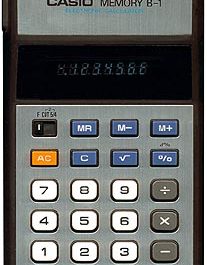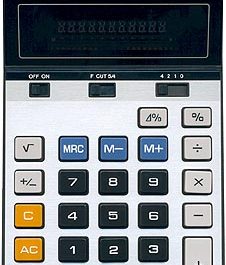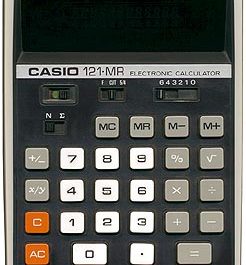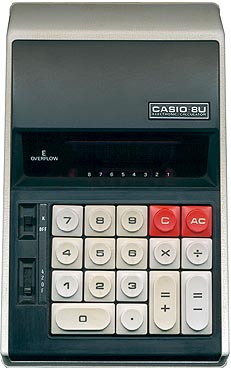
The Casio 8U was an early calculator released by Casio Computer Co. in 1973. It bridged the gap between desktop and handheld calculators, with a large wedge-shaped plastic case measuring approximately 115mm x 180mm x 50mm. Despite its size, the 8U could be considered a transportable calculator rather than a true desktop model, since it ran on batteries and had a carrying strap.
Inside, the 8U contained over 60 components, including ICs, transistors, diodes, capacitors and resistors. This high component count was typical for calculators of the era. The main processor was a Hitachi HD3276P chip. Power came from five AA batteries or an AC adapter.

The 8U had an eight digit vacuum fluorescent display, plus an extra “E” digit on the left to indicate errors. The digits used a small “o” font for zeroes rather than a conventional “0” shape. This protected against display failures – if a segment went out, numbers would still be legible. Below the display were decimal point and overflow indicators.

For features, the 8U offered the four standard math operations. It had switched decimal point settings and a constant function on multiply/divide. The logic system was a very early form of RPN (reverse polish notation), described as “semi-RPN.” For example, subtracting 5 from 4 required entering 4, +=, 5, and -= keys in sequence.
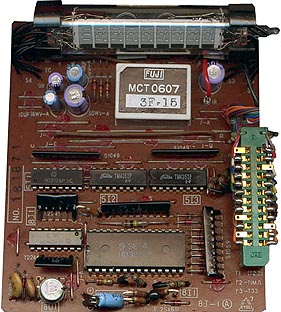
The 8U handled eight full digits for negative numbers. Overflow or divide by zero errors resulted in the display blanking except for an “E” and were not recoverable. One oddity was a “pseudo fixed decimal bug” – if floating point was selected, numbers would appear fixed decimal until enough places were needed.
Overall, the Casio 8U provides an interesting look at early portable calculator design. Despite limitations like lack of error recovery, it shows Casio’s push to make calculators transportable.
